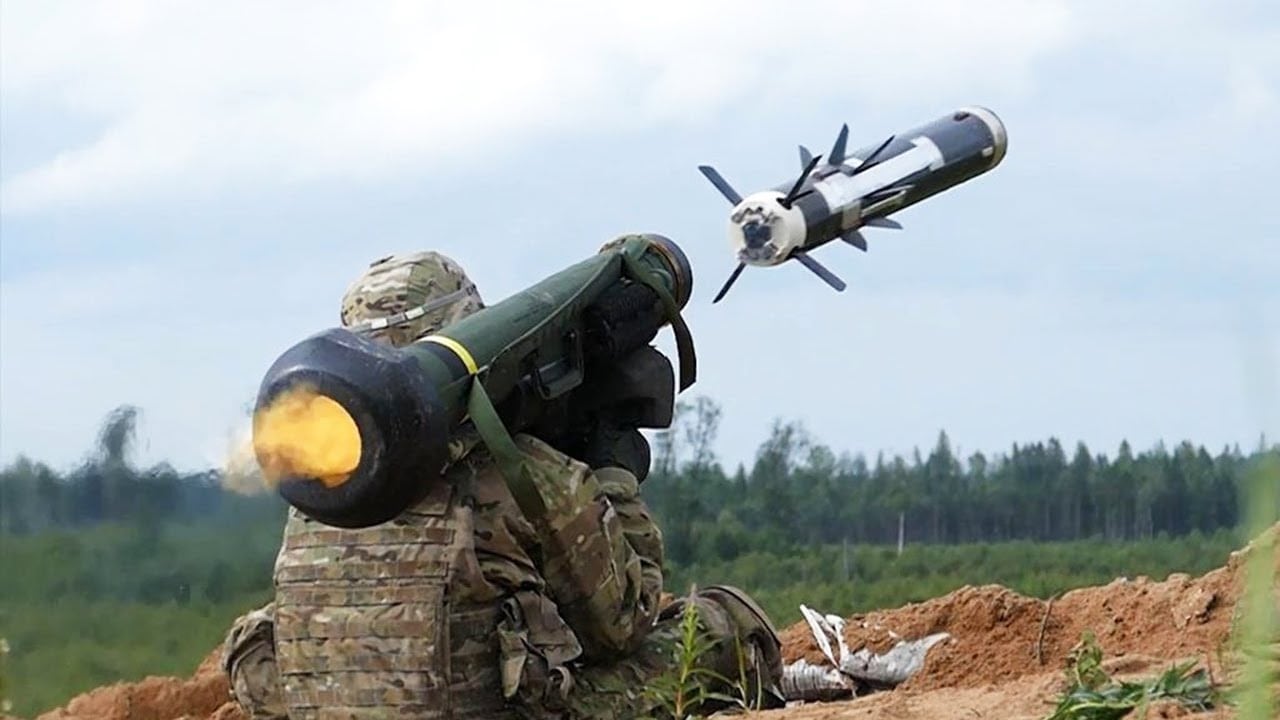Back in July of last year, footage of Ukrainian forces taking out one of Russia’s Soviet-era T-80 main battle tanks circulated widely on social media. The weapon used in the video: the Javelin anti-tank missile. This advanced weapon has undoubtedly played a significant role in the country’s survival over the last year.
Soldiers are even known to refer to the weapon as “Saint Javelin, Protector of Ukraine.”
The Javelin’s work is not finished.
On Monday, the Biden administration announced additional assistance for Ukraine in order to meet the country’s “critical security and defense needs.” Following the Department of Defense’s authorization of this presidential drawdown, Kyiv is set to receive more U.S.-provided Javelins in addition to anti-armor systems, air surveillance radars, and ammunition.
What Makes the Javelin Special?
The FGM-148 Javelin first entered service in the mid-1990s to replace the aging M47 Dragon. Multiple variants of the anti-tank missile launcher emerged over the years, and the current model is the FGM-148F.
Manufactured by Raytheon and Lockheed Martin, the Javelin lets its operator remain undetectable after launch. After the weapon is fired using the attached command launch unit, the missile ejects and travels at a rate of 1,000 feet every seven seconds while being guided by an infrared seeker. The Military Times elaborates on this process:
“Upon contact, the foremost of two tandem high-explosive antitank, or HEAT, warheads explodes against the reactive armor, clearing the way for the second warhead to reach the tank’s main armor. The Javelin’s warheads can penetrate steel up to 23.5 inches to 31.5 inches thick. With an effective range over 1.5 miles, the Javelin’s warhead travels 213 feet before it arms — but it does produce a backblast that the user must take into account.”
The Javelin’s Role in Ukraine
Such advanced capabilities have seen the Javelin emerge as a defining element in the war. The system’s “fire-and-forget” feature allows Ukrainian soldiers to maneuver into attack positions against Russian forces before scattering to evade a counterattack. At the onset of the war, NATO provided thousands of Javelin anti-tank launchers to Ukraine, and these proved key to the country’s initial defense. When Russian forces lined up outside Kyiv and prepared to attack the capital, Ukrainian forces thwarted their advance by picking off MBTs with Javelins.
Faulty Tech Stymied the Javelin’s Full Potential
But while the Javelin is a lot simpler to use than similar anti-tank missiles, training is still essential. Over the summer, reports emerged that instruction manuals were missing, and that the powerful weapon was therefore being used incorrectly. The Washington Post first reported on this issue and also detailed how Ukrainian forces have had to rely on electrical components from video game controllers to replace defective Javelin parts. The lack of technical support was a big problem, especially considering that every Javelin used incorrectly represents roughly $400,000 down the drain for the United States.
This weapon, though expensive, is certainly one of Ukraine’s most valuable players in the fight against Russia. As long as Ukrainian forces receive proper instruction and working parts, the Javelin will continue to honor its nickname as the “Protector of Ukraine.”
Maya Carlin is a Middle East Defense Editor with 19FortyFive. She is also an analyst with the Center for Security Policy and a former Anna Sobol Levy Fellow at IDC Herzliya in Israel. She has by-lines in many publications, including The National Interest, Jerusalem Post, and Times of Israel.

